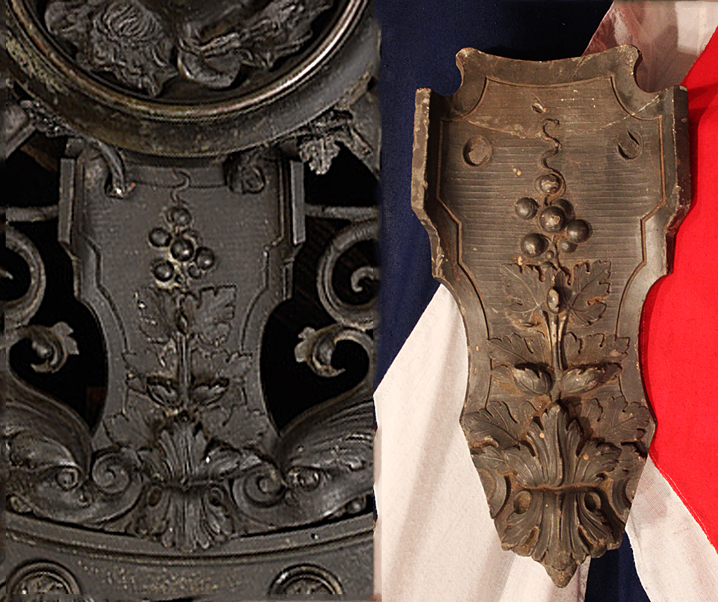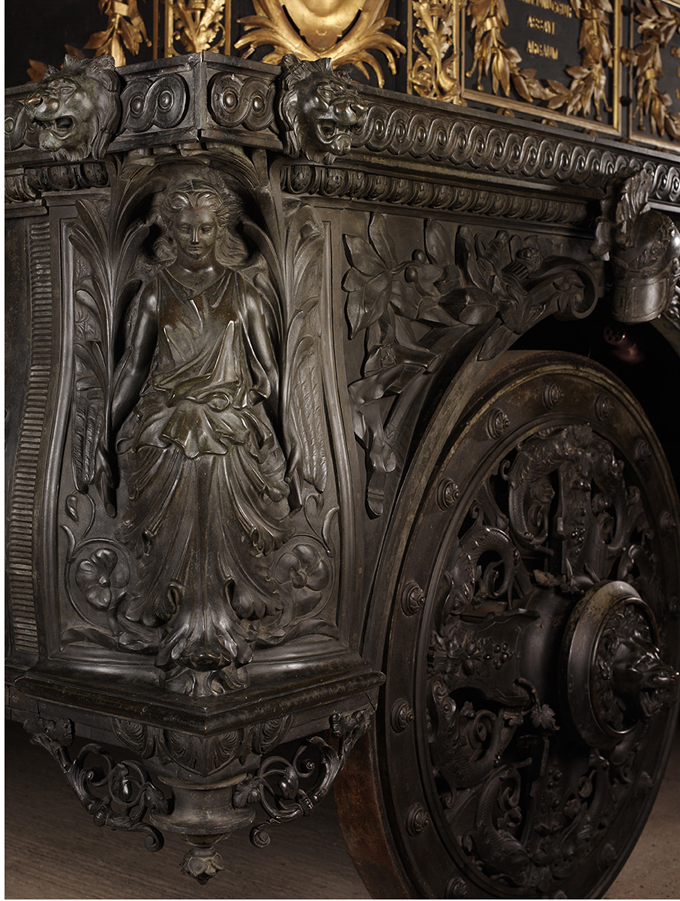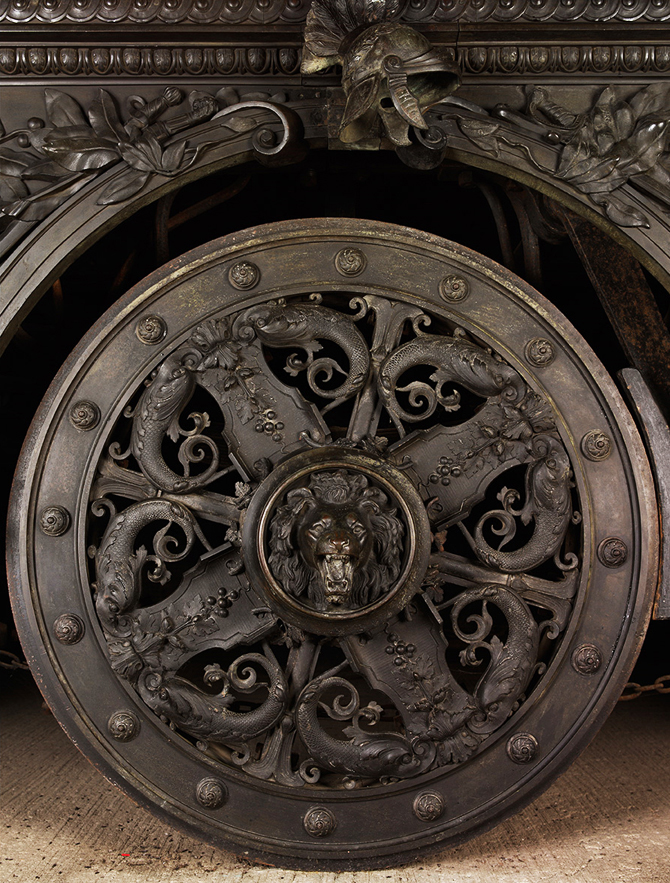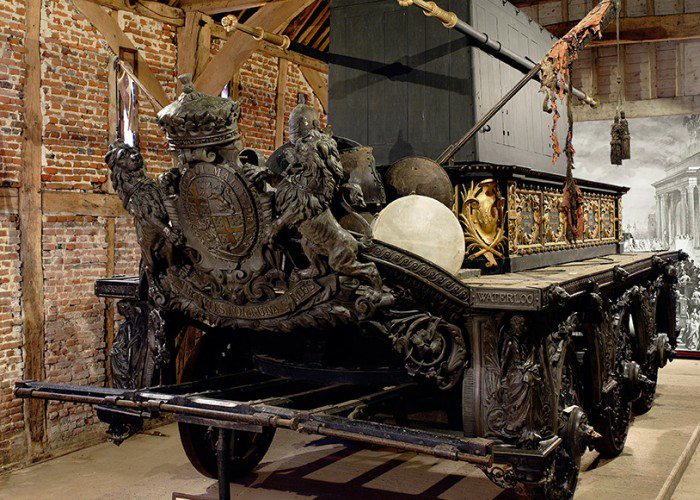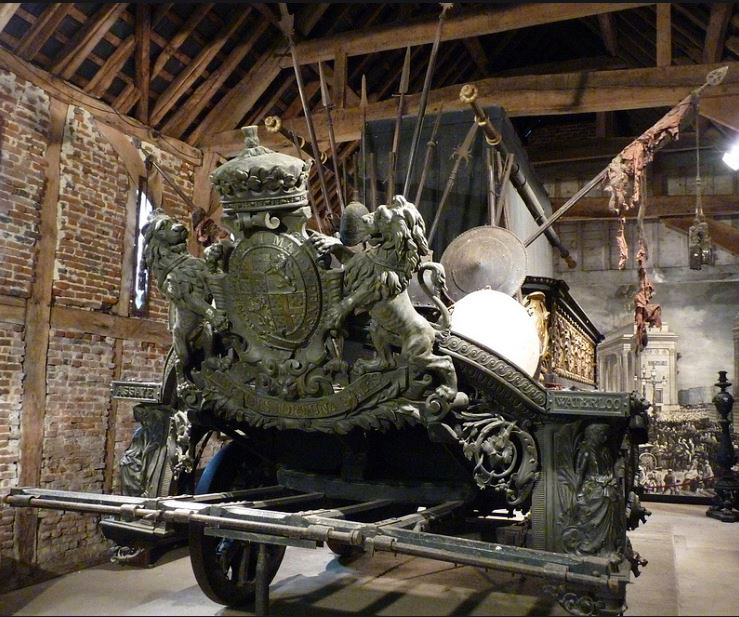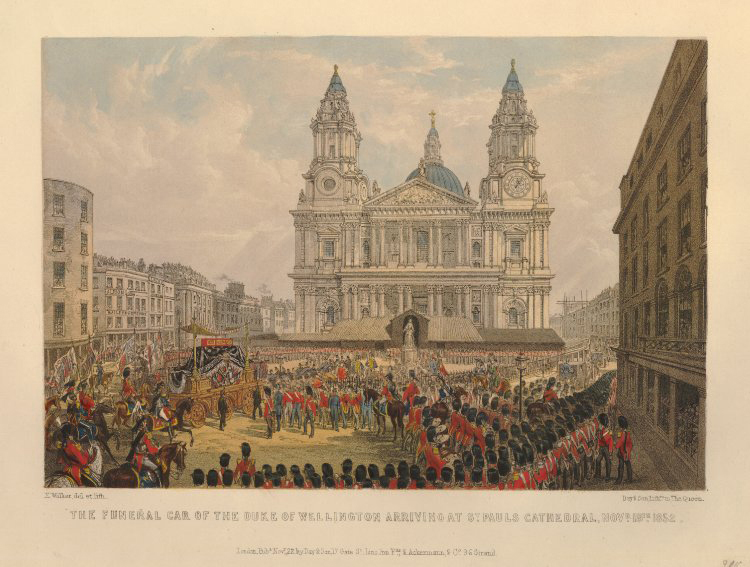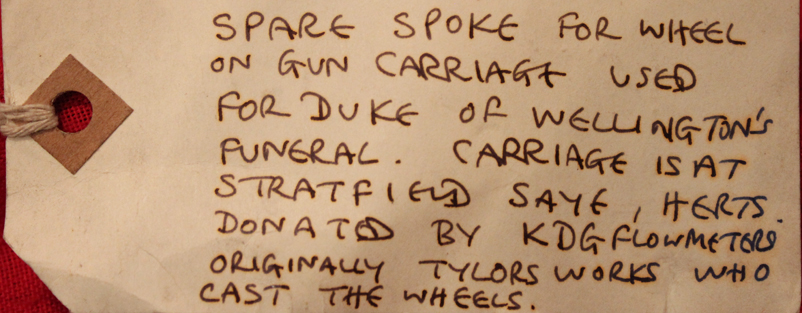A Very Rare Collector’s Piece From One of the Most Significant National Hero State Events in the 19th Century. Original Part From The Duke of Wellington's Funeral Carriage. That Was, For The Greater Part , Constructed From Cannon Captured From Waterloo.
Attended by an estimated at the time, 1.5 million people, and this was when the population of the country was almost a quarter what it is today.
From one of the original foundrys Taylors Works that cast the wheels. This is an original spare wheel support made for the magnificent 18 ton funeral carriage. The Duke lay in state in Chelsea Hospital for two days, during which thousands of mourners including the Queen paid their respects. His funeral took place on 18 November when the funeral processed from Horse Guards to St Paul's, Wellington's remains borne in a huge funeral carriage weighing over 18 tons, and that is now on public display at Stratfield Saye. Field Marshal Arthur Wellesley, 1st Duke of Wellington, KG, GCB, GCH, PC, FRS (1 May 1769 - 14 September 1852), was a British soldier and statesman, a native of Ireland from the Anglo-Irish Ascendancy, and one of the world’s leading military and political figures of the 19th century. His importance in national history is such that he is often referred to as "the Duke of Wellington" instead of "the 1st Duke of Wellington" (overshadowing the heirs to his dukedom including the current duke, see Dukes of Wellington).
Wellesley was commissioned as an ensign in the British Army in 1787. Serving in Ireland as aide-de-camp to two successive Lords Lieutenant of Ireland he was also elected as a Member of Parliament in the Irish House of Commons. A colonel by 1796, Wellesley saw action in the Netherlands and in India, where he fought in the Fourth Anglo-Mysore War at the Battle of Seringapatam. He was appointed governor of Seringapatam and Mysore in 1799 and as a newly appointed major-general won a decisive victory over the Maratha Confederacy at the Battle of Assaye in 1803.
Wellesley rose to prominence as a general during the Peninsular campaign of the Napoleonic Wars, and was promoted to the rank of field marshal after leading the allied forces to victory against the French at the Battle of Vitoria in 1813. Following Napoleon's exile in 1814, he served as the ambassador to France and was granted a dukedom. During the Hundred Days in 1815, he commanded the allied army which, together with a Prussian army under Bl?cher, defeated Napoleon at the Battle of Waterloo. Wellesley's battle record is exemplary, ultimately participating in some 60 battles during the course of his military career.
Wellesley is famous for his adaptive defensive style of warfare, resulting in several victories against a numerically superior force while minimising his own losses. He is regarded as one of the greatest defensive commanders of all time, and many of his tactics and battle plans are still studied in military academies around the world
The Duke of Wellington is one of only a handful of non-royals to have been accorded a state funeral. This carriage or ‘car’ was made for the occasion.Included in it's construction were over ten tons of bronze cannon captured at Waterloo and six foundries employed over a hundred men for eighteen days to make it.
The resulting utterly magnificent creation measured twenty seven feet in length, it was ten feet wide and seventeen feet high. A canopy of silk and silver hung from four halberds above the main structure. It required twelve horses to pull it.
The car proved to be the most controversial feature of Wellington’s funeral on 18 November 1852. Prince Albert, who oversaw the project, decreed that it should be ‘a symbol of English military strength and statesmanship’.
His wife loved it. Lord Hardinge, the Duke’s successor as commander-in-chief, reckoned it ‘a beautiful specimen of art. ‘
It did not help that one of the carriage’s six wheels got stuck in The Mall during the elaborate funeral procession. About sixty policemen were needed to free it. Worse, when it reached St Paul’s Cathedral, its mechanism failed. It took over an hour for the Duke’s coffin to be conveyed inside. The car then found a home in the crypt of St Paul’s until it was transferred to Stratfield Saye in 1981.
Despite such shortcomings, Wellington’s funeral was one of the great British state occasions of the nineteenth century. An estimated million and a half people converged on the procession route. The general feeling was that the passing of the hero of Waterloo marked the close of an era. Tennyson went even further, declaring that ‘the last great Englishman is low.’ Certainly there was nothing to compare to it until the late, great, Sir Winston Churchill’s funeral in 1965.
The spoke weighs around 6.5 kilos. Of very heavy metal construction
Code: 22855
1500.00 GBP



